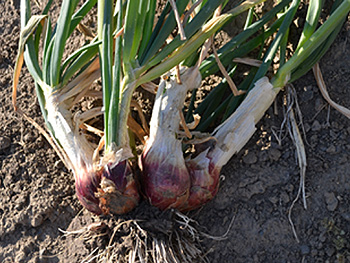
One way to develop a self-sustainable food supply is perennials. Like fruit trees – they produce food every year. An experiment here that is “showing fruit” is our patch of perennial onions. Maybe they’re right for your garden too.
The type of onion you buy in grocery stores is an annual — or biennial. They’re grown from seeds planted in the spring. In theory, you then have plump bulbs come autumn. If you leave the bulb in the ground, the plant flowers and goes to seed in the second year, then dies and rots after it’s done flowering.
In my practice, seeds usually only produce something akin to a little scallion by the end of the first growing season. Not much onion at all. The alternative to seed is “sets.” You can buy “sets” that are baby onion plants that someone else grew (in a greenhouse, perhaps). Planting sets in the spring yields the classic onion bulb in the fall. For me, annual onions have not been too successful. Even then, they are not a quick plant-and-eat crop. For me, they take two years from seed to table.
AND, just for a bit of tinfoil hattery, what if the seed store isn’t there to sell you seeds or sets? (SHTF scenario)
Perennial “Walking” Onions
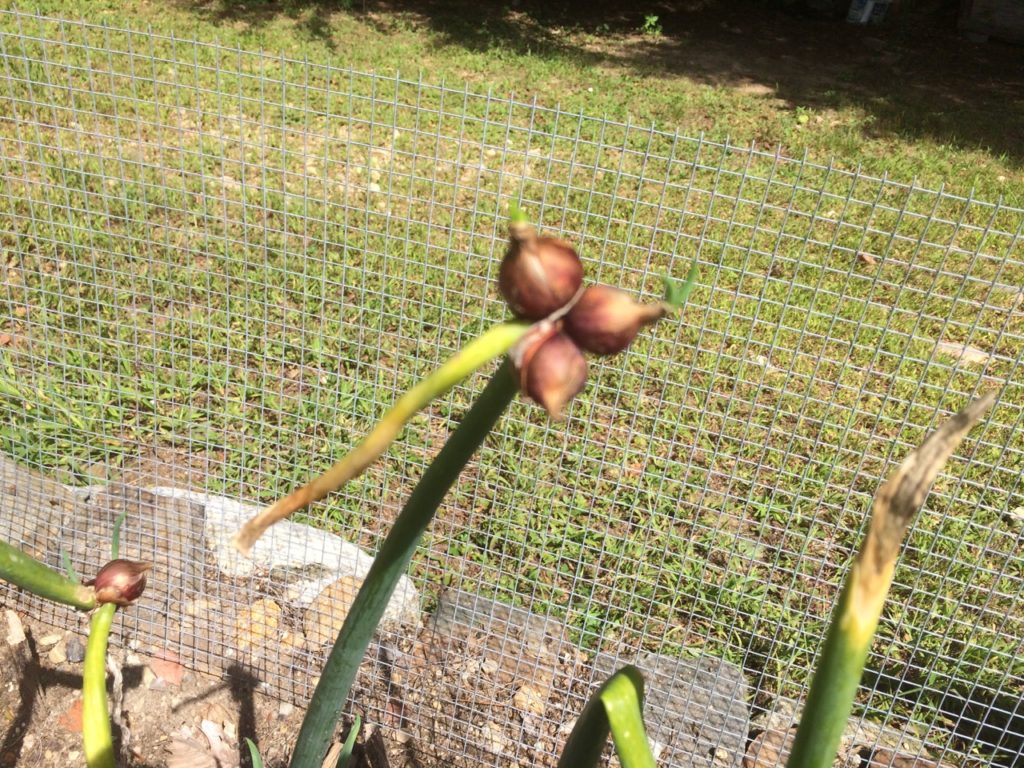
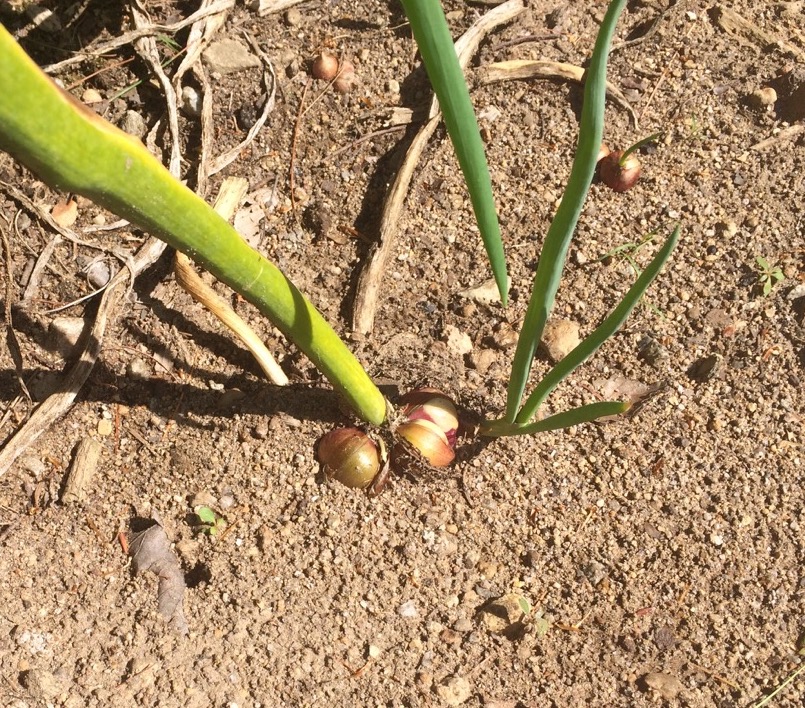
Back in 2017, I came across an article that touted the ease of growing perennial onions called (among other names) Walking Onions. In summer, these produce miniature bulbs (sets) at the top of a tall stalk. When the sets grow too big and heavy for the stalk, it bends to the ground. If the soil is right, the sets take root and new onions grow a foot or so away from the mother plant. That’s how they “walk” across your garden.
Liking the idea of onions I did not need to grow from seed, I bought ten “sets” from a website.
Slow Start
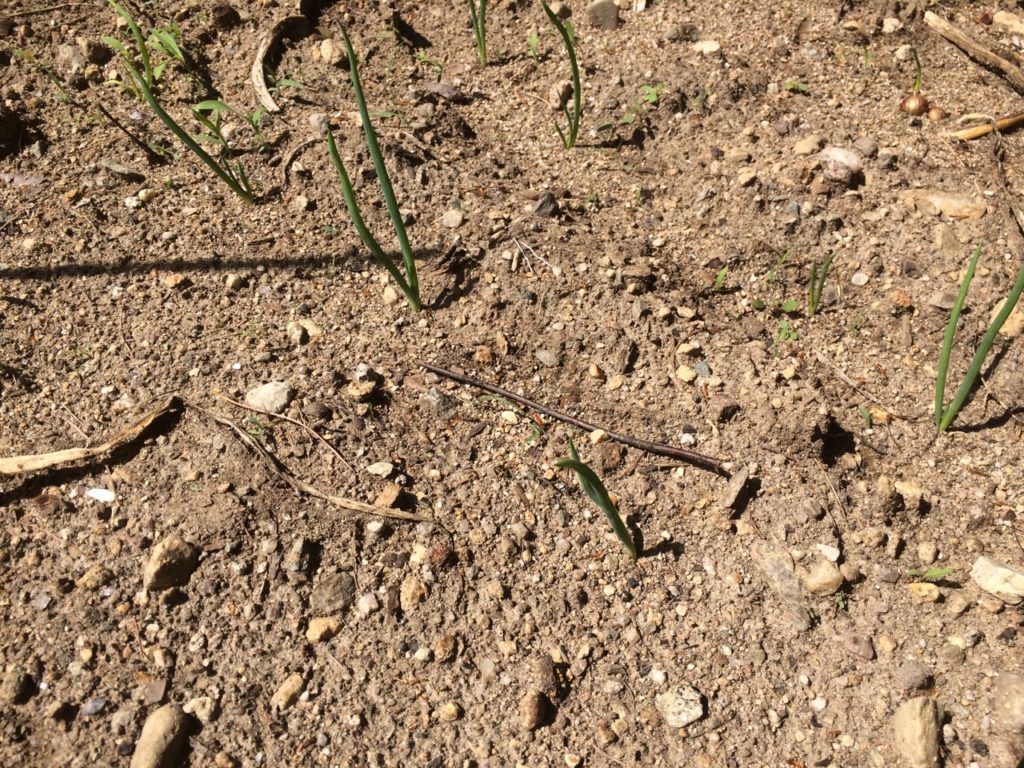
That autumn of 2017, I planted the eleven little sets they sent me. Only seven of them produced leaves before winter set in. Two died mid-winter, leaving me with five plants. No onions for me yet.
During the following summer (2018), three of the five plants produced a total of a dozen or so little sets. I plucked and planted all of them in a slightly enlarged onion patch. Still no onions for me.
First Fruits
This year, (2019) the second year after initial planting, the experiment is starting to pay off. Three of my five original plants had split and produced many large sets (see photos). Others produced a good quantity of smaller sets totaling over four dozen. I enlarged the onion patch some more and planted most of them. ( I ate one to see how they tasted.)
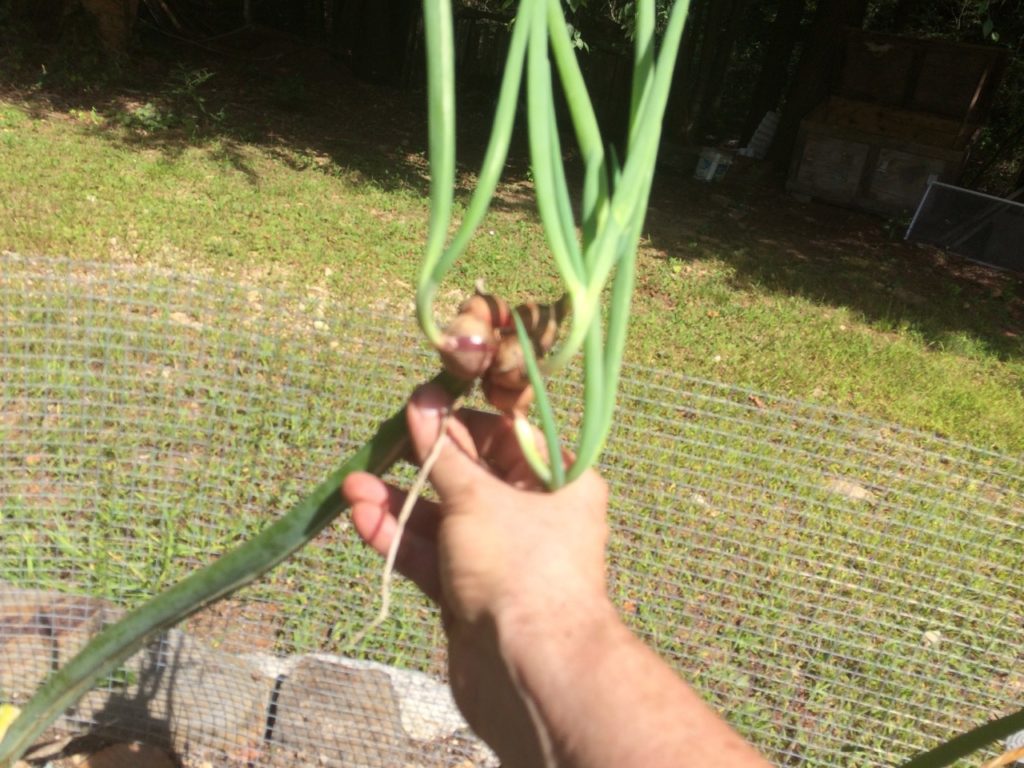
Since my original three strongest plants had split into two, I decided to harvest two of them. I dug up the pair. Both had split into a sister bulb each. I kept one of the bulbs and replanted the other. (I ate the “interest” while preserving the “principle”) Two onions is not a harvest to boast about down at the Grange Hall but it is an encouraging start.
Walking Onion Timetable
Walking onions are not an instant food. They take a couple years to get established.
After first planting your new sets in early autumn, the sets will send up a spray of thin greens but nothing else. The plant is enlarging its bulb to survive the winter and for the next year’s growth.
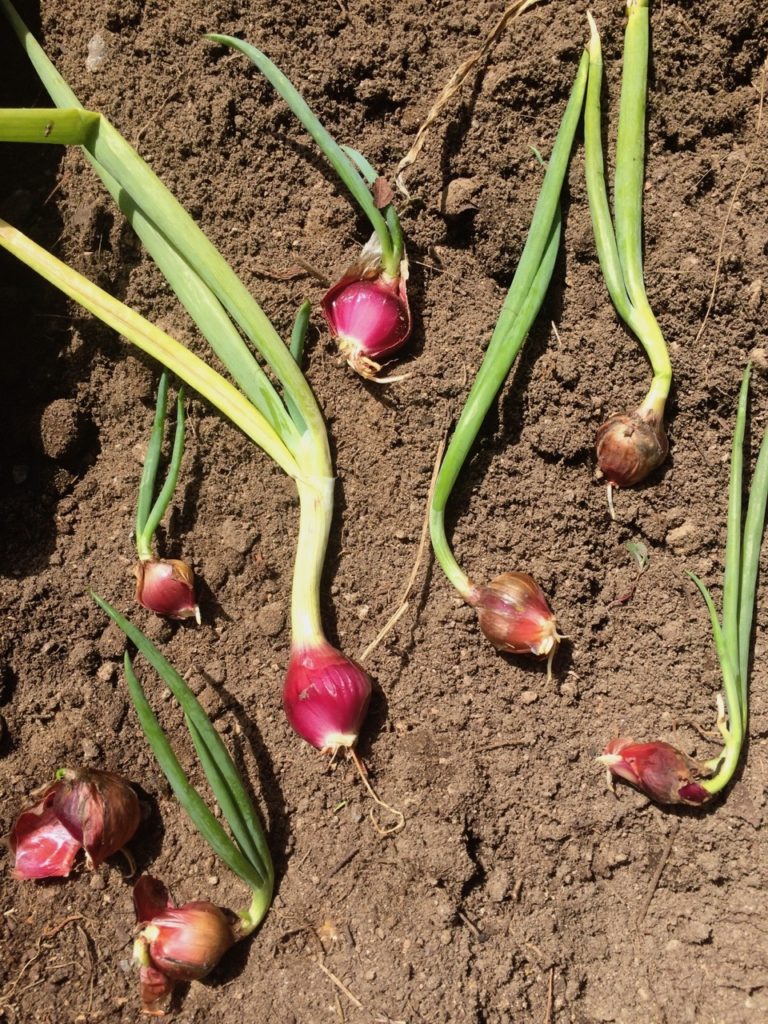
In its first full season, (spring, summer, fall) the bulb will put up new leaves. The strongest plants might also put up a stalk and grow sets. This will consume much of its own bulb, however. Not to worry. The plant may also start to bud off a sister bulb too.
In its second full season, the plant will put up an even bigger stalk with bigger sets. The sister bulb will grow and start to put out its first-year greens. This sister will bud off a sister bulb of its own, too. Leaving a mature plant in the ground for yet another season will result in another sister.
Think Shallot, not Bermuda
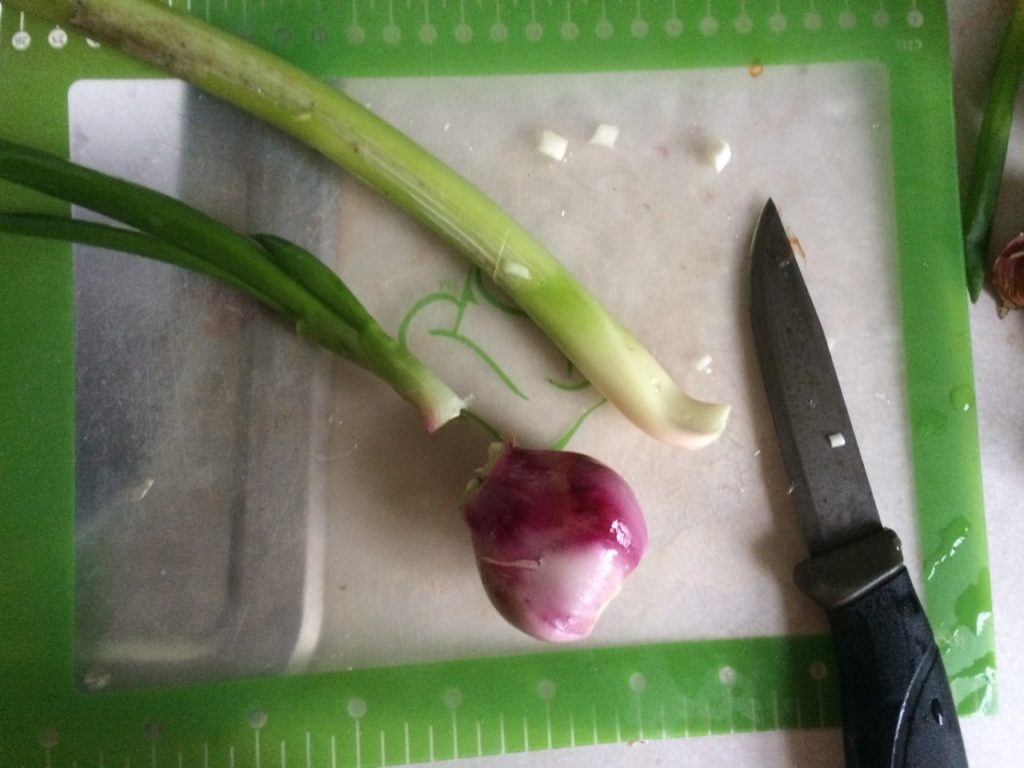
Walking onions do not make huge bulbs like annual onions do. Their bulbs are more like shallots in size. You can chop and eat the greens too, like giant chives. (Although, avoid the sets’ stalk as it tends to be fibrous and chewy.) You can eat the sets too. They’re essentially baby onions.
Packing a Punch
What Walking Onions lack in size, they make up in punch. They venture toward being a hot onion, not a sweet onion. We used my meager first-harvest in this year’s batch of salsa. That seemed like a good place for a hot onion.
Sustainable Supply
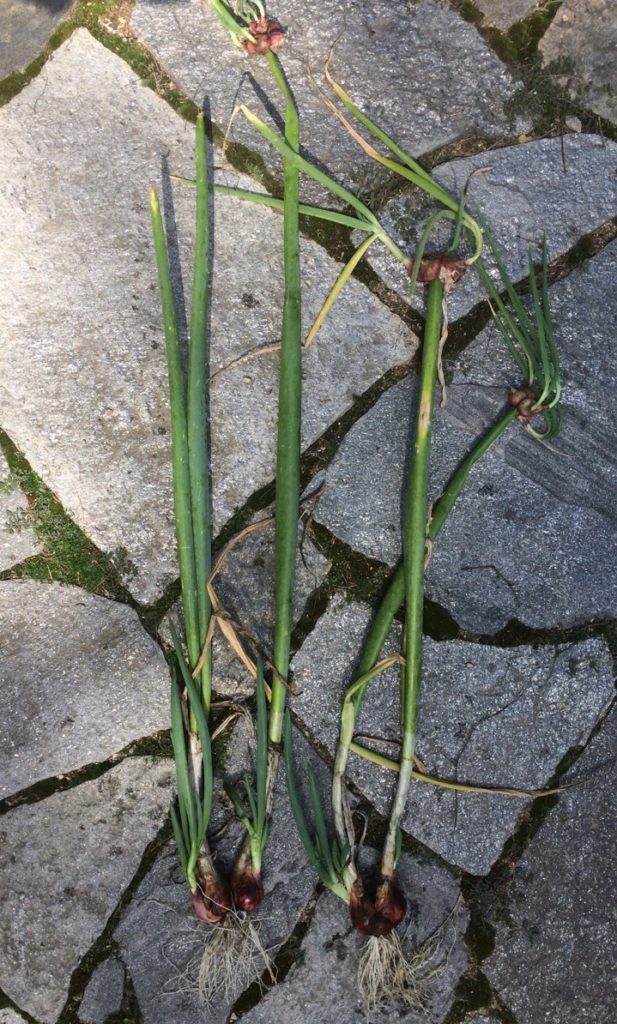
This year, I only harvested two mature plants (mostly out of curiosity). See the photo at right. You can see the
Right For You?
If you’re looking for something perennial and edible for your garden, consider Walking Onions. They take a little while to get established but they’re low-maintenance once they get settled in.
—

Yeah I planted “indian onions” in the garden and yard both. I transplanted them from my inlaws place where they’ve grown for over 30yrs that I’m aware of. They took easy enough. Now if I could just have better luck with the blackberries from their place.
Hi Matt.
“Indian Onion” is the same thing as what I called “Walking onions”?
Ah, blackberries. They’re a little too eager around here. They’re becoming obtrusive and showing up where I don’t want them.